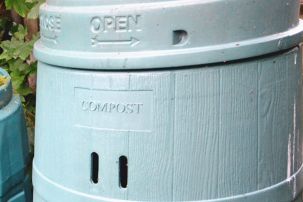Lesson summary
Students become familiar with the concept of composting, and complete a diagram of a “compost cycle”.
Learning intentions:
Students will...
- learn that composting is the natural process of breaking down food scraps and garden waste, in a bin or heap, into humus (rich soil) that can be used on the garden.
- learn that compost is the material produced from a compost bin or heap. This makes wonderful fertiliser for the garden.
Lesson guides and printables
Lesson details
Curriculum mapping
Australian Curriculum content descriptions:
Year 1 Science:
- People use science in their daily lives, including when caring for their environment and living things (ACSHE022)
- Represent and communicate observations and ideas in a variety of ways such as oral and written language, drawing and role play (ACSIS029)
Year 1 English:
- Engage in conversations and discussions, using active listening behaviours, showing interest, and contributing ideas, information and questions (ACELY1656)
- Create short imaginative and informative texts that show emerging use of appropriate text structure, sentence-level grammar, word choice, spelling, punctuation and appropriate multimodal elements, for example illustrations and diagrams (ACELY1661)
Year 2 Science:
- People use science in their daily lives, including when caring for their environment and living things (ACSHE035)
- Represent and communicate observations and ideas in a variety of ways such as oral and written language, drawing and role play (ACSIS042)
Year 2 English:
- Listen for specific purposes and information, including instructions, and extend students’ own and others’ ideas in discussions (ACELY1666)
- Use comprehension strategies to build literal and inferred meaning and begin to analyse texts by drawing on growing knowledge of context, language and visual features and print and multimodal text structures (ACELY1670)
- Create short imaginative, informative and persuasive texts using growing knowledge of text structures and language features for familiar and some less familiar audiences, selecting print and multimodal elements appropriate to the audience and purpose (ACELY1671)
Syllabus Outcomes: ST1-11LW, ST1-9ES, ST1-4WS, EN1-1A, EN1-2A, EN1-4A.
Resources required
- Art materials
- student worksheet.
You will also need examples of the following:
- fresh fruit and vegetables
- fruit skins and vegetable scraps
- garden waste (leaves, small stalks, grass clippings, weeds)
- fresh compost
Additional info
This is an original Cool.org lesson. Facts and figures in these lessons may have changed since this lesson was published. We always endeavour to update our resources in a timely manner, but if you see an error or issue in our resources please get in touch with us.


Welcome back!
Don't have an account yet?
Log in with:
By signing up to Cool.org you consent and agree to Cool's privacy policy to
store, manage and process your personal information. To read more, please see
our privacy policy here(Opens in new tab).
Create your free Cool.org account.
Many of our resources are free, with an option to upgrade to Cool+ for premium content.
Already have an account?
Sign up with:
By signing up to Cool.org you consent and agree to Cool's privacy policy to
store, manage and process your personal information. To read more, please see
our privacy policy here(Opens in new tab).